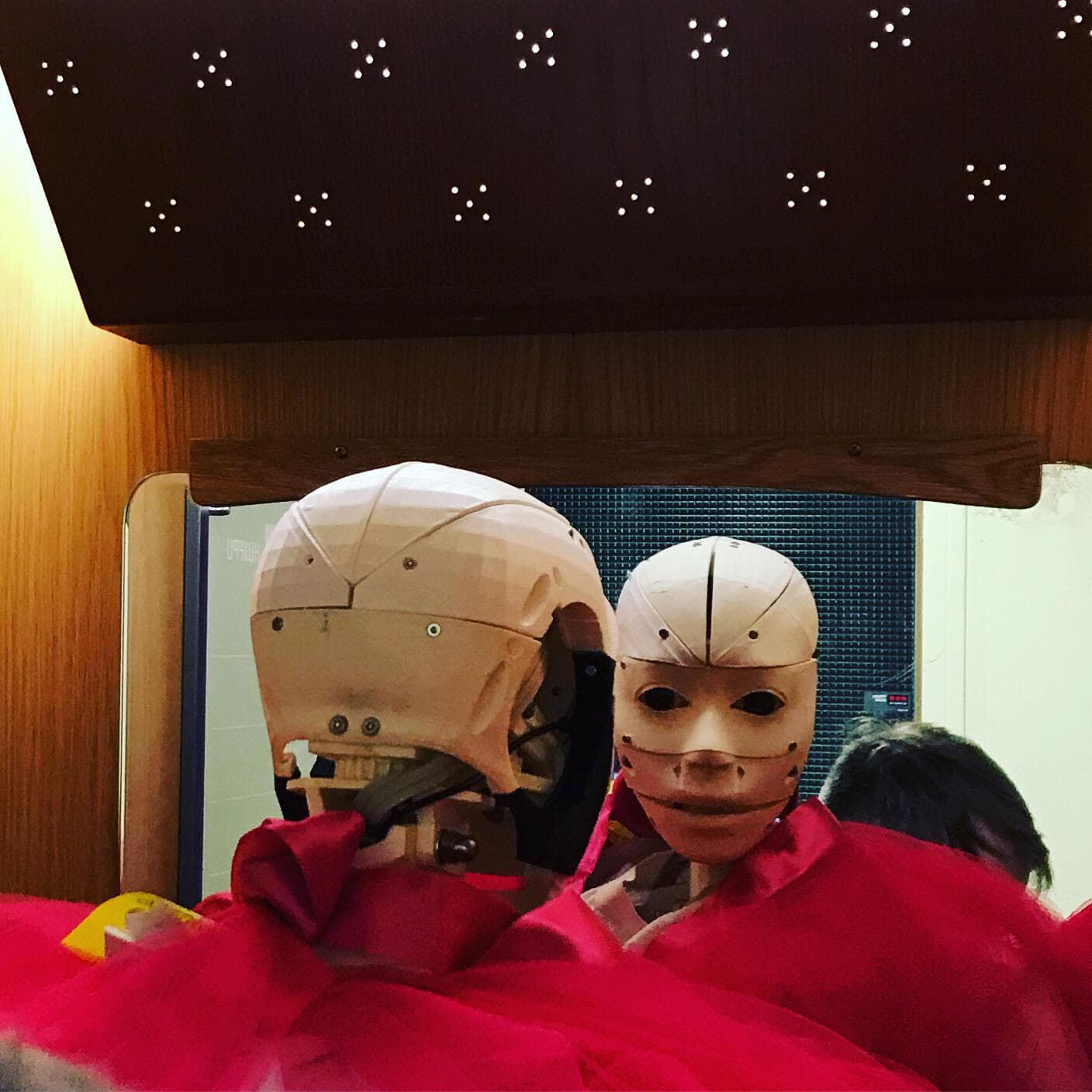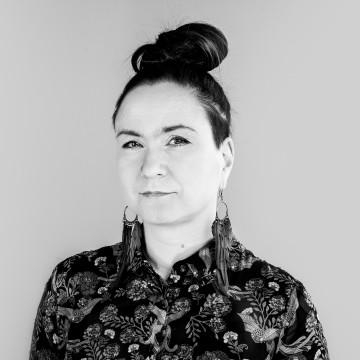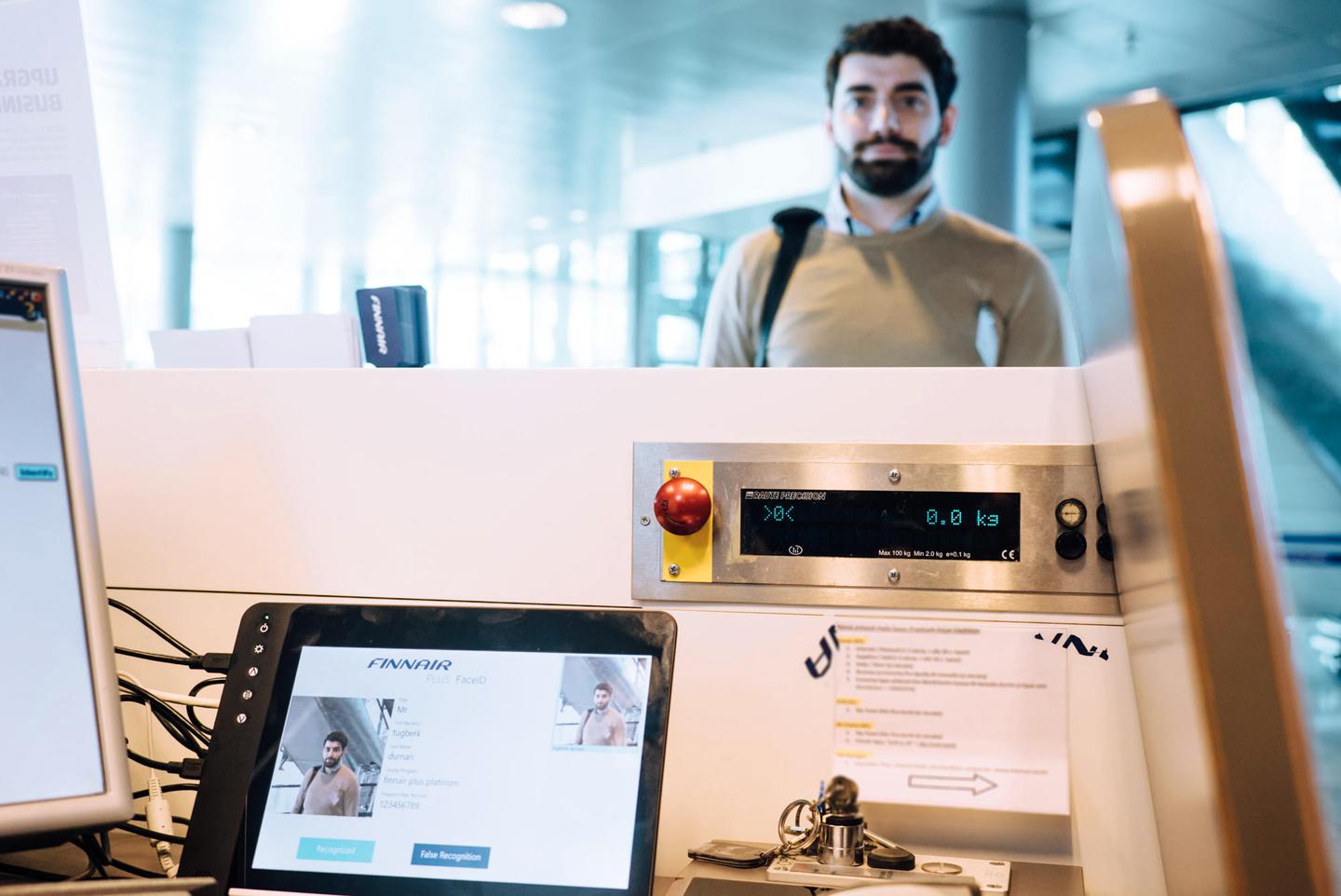Why a tech company needs artistic interventions
How do you navigate an unknown future? How would you expand your thinking in order to design complex projects for complex future environments? At Futurice, we create technological solutions for a future world. Sometimes we are the first to explore and try to solve a particular problem, so there are no references to look at. Solving the kinds of problems we encounter requires a deep co-operation between design, technology and business.

A tool for questioning our thinking
The definition of art is controversial. While technology today can democratize the creation of images, for example, and machine learning can assist us in many creative functions, the power of creative thinking is still of vital importance. As a company, we’re known largely for the tech-related work we do, but we also have approximately 100 designers working in-house and we collaborate with external artists. In the context of technology, we can use art as a tool to communicate with the world and to challenge the world as we know it.
“Human Robot. Moving Robot” is one of our artistic interventions. The project first saw the light of day in March 2019 for Futures Day. In August of the same year, workshops were held at Annantalo, a multidisciplinary arts centre for children and young people in the heart of Helsinki. This month it’s a part of LIFT Helsinki 2019 festival at Kaapelitehdas.
I first met contemporary dancer Iina Taijonlahti at Helsinki Design Week 2018, where the Futurice robotics crew experimented on what having a discussion with a robot is like and how it feels to play a robot in a discussion. Taijonlahti invited me to lunch and I was immediately sold on her idea of dancing with Momo. Together with Taijonlahti and Futurice Robotics, we created a workshop where Momo teaches people to dance while at the same time teaching them about machine learning. At the end of the workshop Taijonlahti and Momo perform a dance from the future. For us, this has been a journey to stretch our thinking and develop new points of views.
A tool for navigating the unknown
The “Human Robot. Moving Robot” workshop has visited Annantalo Children’s future laboratory twice now. Pirjetta Mulari, head cultural producer at Annantalo, says that art as a method offers an interesting and tangible way to approach and handle technological topics. And dance as a form of art is something that everybody can participate in. According to Mulari, the groups participating “Human Robot. Moving robot“ - such as the visitor groups from Korea and Japan, who came to Finland to study how arts and culture education has been formed in the city of Helsinki for primary school - felt they were experiencing something totally unique.
Mulari feels that we need experiments like this - especially with young people. Artistic methods allow us to further explore the experience after the workshop. For example, a group of Annantalo’s own art students, who had participated in a workshop, continued exploring the topic of the robot further in the form of fine art - by making collages of robots. Could this inspire the future robotics designers to come up with more explorative designs for machines? Perhaps we see the rise of biodegradable robot parts or robots imitating other natural forms, not just the human?

Some of the groups that participated in the workshops were students studying completely different domains, but as Taijonlahti observes: the process is there. The time spent together in the workshop might be limited, but people continue getting insights afterwards. The experience triggers something in people’s minds and one day, perhaps months or years later, it will help them come up with a creative solution.
A tool for crafting desired futures
Art is a tool to craft the unknown. According to Taijonlahti there is the idea of surrendering yourself to the unknown. The workshop context is always exciting since unexpected things tend to happen. What is interesting is the change of agency. When you work with a robot, there is a script, and then there isn’t. When everything is programmed, you are still giving up your control and ‘you’ as such are no longer the central focus of the activity. You need to see the unexpected as an opportunity. Ask yourself: How do we work our way out of this one? This will lead you to master the unknown by surrendering to it.
Taijonlahti finds the similarities between the terminology used in choreography and in computer science interesting. We talk about components, time, transitions, etc. Some choreographers - such as William Forsythe - use methods in their work that could be described as very algorithmic. By using dance as a method, we can set ourselves outside the screen, explore things through and with our body. Trying out things physically makes the abstract concrete. When we look at things from another angle, we get new insights and might bring something new into the things we do, such as visual design. One can also take a deeper dive into the matter at hand.
We craft the future together. Art can build a bridge between the disciplines. In the “Human Robot. Moving Robot” workshop people coming from different domains found a shared language when they started discussing “craftsmanship” and the role of crafts in the future. - What are the professions of the future and how we crafting different materials could work our way together towards a future we desire?
Overcoming common pitfalls
The design domain has gone through a lot of changes over the last 20 years. From the era of hero designers, we have been moving to success-stories featuring multidisciplinary teams. Working with multiple international companies during my 20+ year career in design, I have witnessed both approaches. So how to overcome artistic pitfalls? The key lies in understanding context and situation. When am I serving the customer and when is the right moment to execute something I feel I as a person need to bring to this world? When building bridges, we must question our egos as artists.
We need to be able to question our own thinking. We need to be able to come up with creative new solutions. We need to set the guidelines for the desired future. Artistic approaches help us understand, explore and validate our projects. They help us see the world from a new point of view - and develop one.
In conclusion - technology is always a product of its own time and we can’t know which components we have to work with in the future. Art helps us imagine the invisible, imagine alternative futures and make them come to life.
Art helps us question what kind of future we want to design.
“Human Robot. Moving Robot” contemporary dance performance and associated workshop October 23, Kaapelitehdas, Helsinki
Come and discuss why artistic interventions are needed with Annina Antinranta and Iina Taijolahti in the panel discussion "Taide, tiede & teknologia: What’s Next?” Lift Helsinki 2019, October 24 Kaapelitehdas Stage 3, at 11:50
Writer Annina Antinranta is a design director at Futurice Experience designer, originally trained as a media artist and a design coach
People interviewed for the article: Pirjetta Mulari, Head cultural producer Annantalo, City of Helsinki, Iina Taijonlahti, contemporary dance artist, freelancer, Paavo Punkari, VP and technology leader, Futurice,
Photos by Eeva Nikkari
 Annina AntinrantaPrincipal Designer - Emerging Business
Annina AntinrantaPrincipal Designer - Emerging Business

